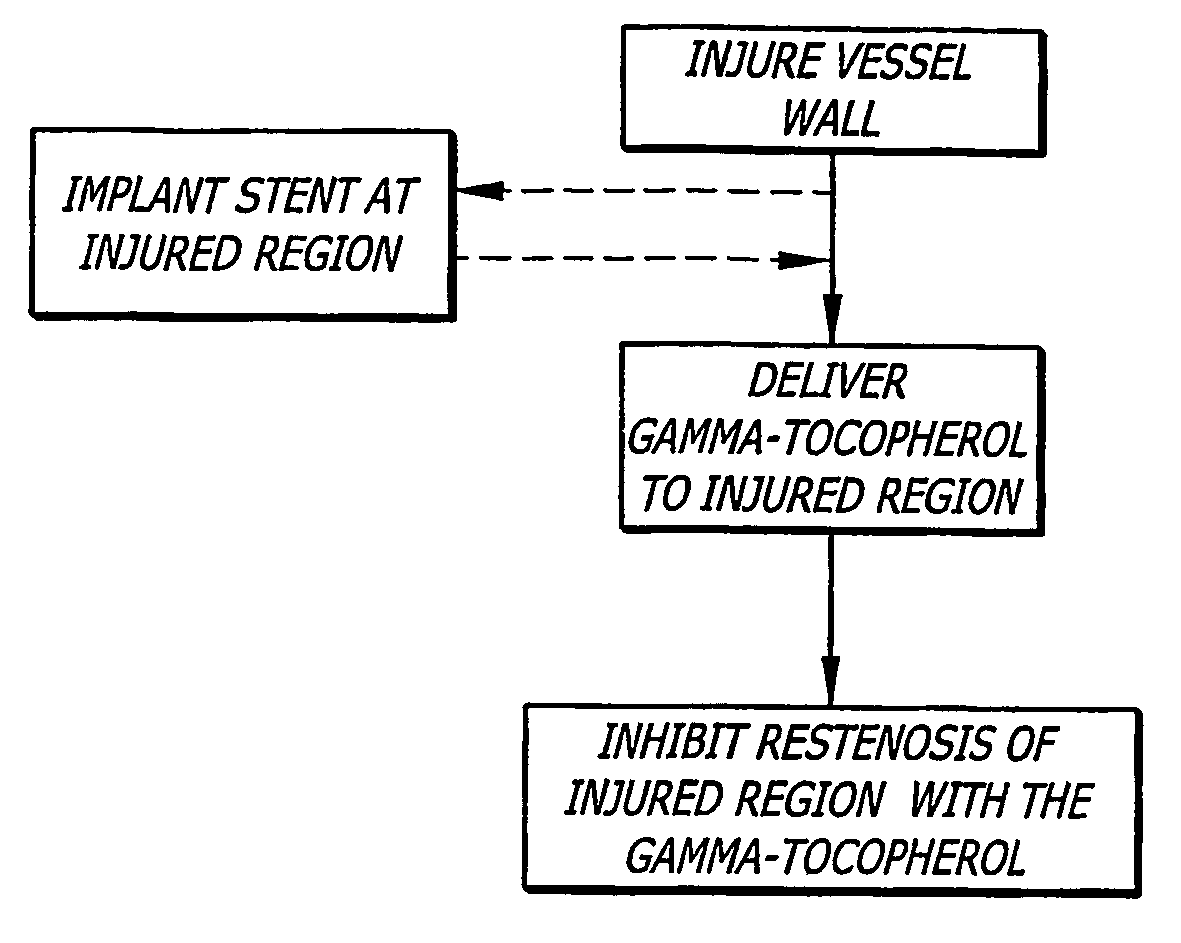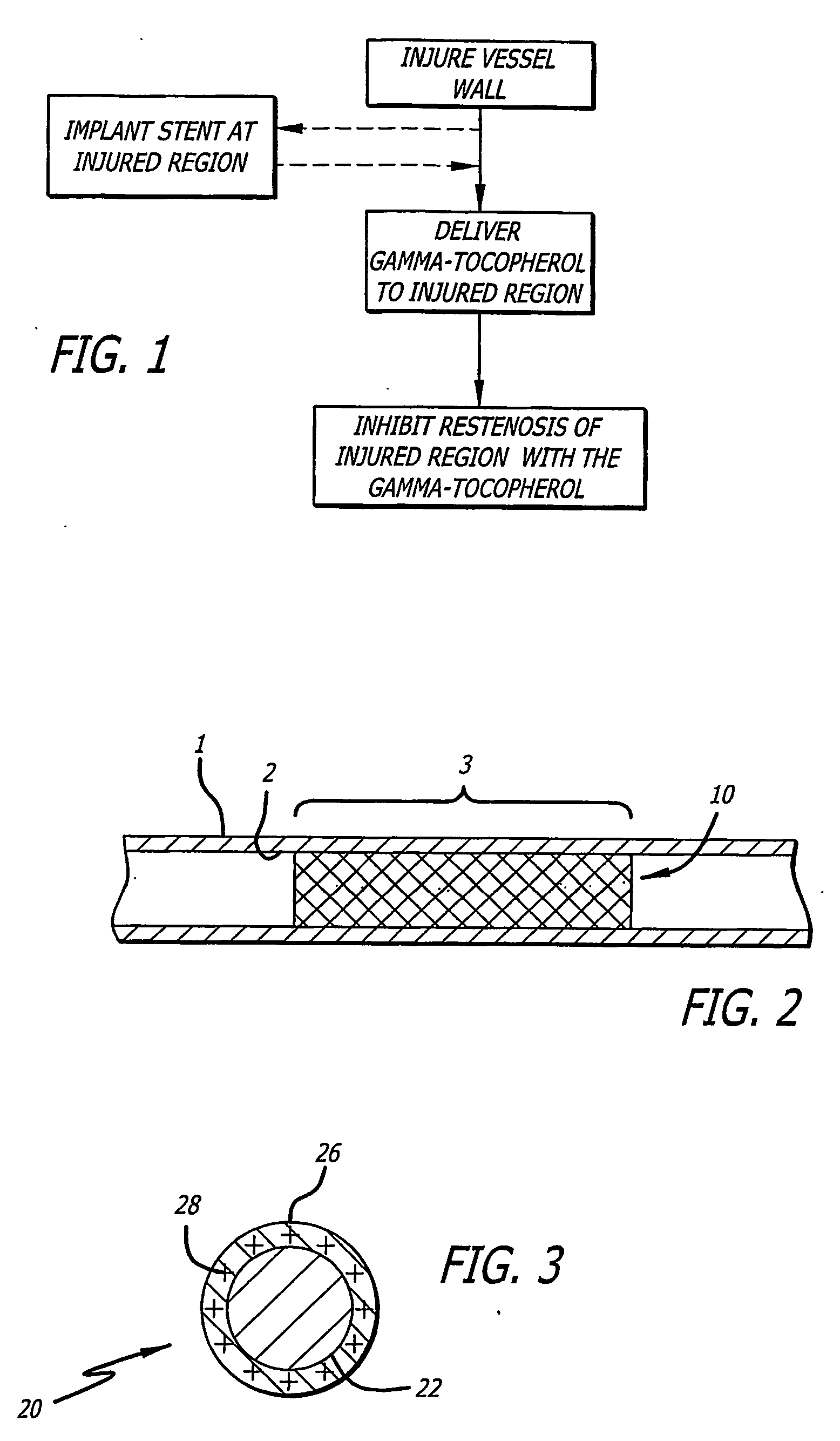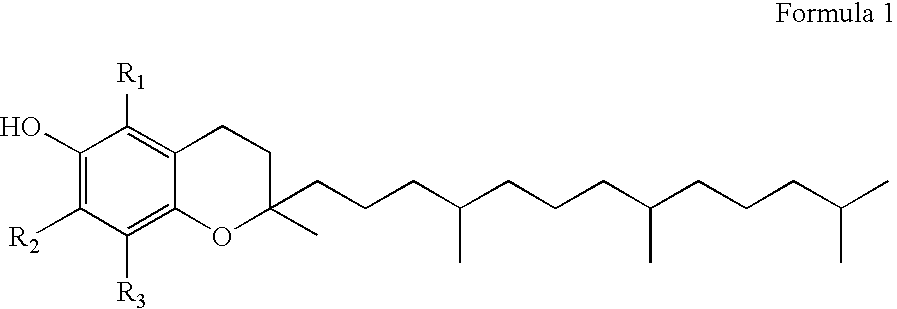Gamma-tocopherol therapy for restenosis prevention
a gamma-tocopherol and restorative technology, applied in the field of implantable stent systems, can solve the problems of balloon end to localized vessel wall trauma, is considered compelling among substantial portions of the healthcare community, and is not suitable for use in prosthesis, etc., and achieves the effects of reducing restorative effect, reducing restorative effect, and reducing restorative
- Summary
- Abstract
- Description
- Claims
- Application Information
AI Technical Summary
Benefits of technology
Problems solved by technology
Method used
Image
Examples
Embodiment Construction
[0084] It is to be appreciated that the present disclosure provides various aspects, modes, embodiments, variations, and features thereof that provide enhanced medical therapy for lumenal wall disorders, and in particular in order to reduce restenosis related to stent implantation or other recanalization procedure. In particular, novel uses of gamma-tocopherol, and other related compounds, either alone or in various combinations, are herein provided in varying detail in order to achieve the various benefits and objects described.
[0085] Tocopherols, in general, have been the topic of substantial research and clinical experience as “GRAS” compounds sold over the counter for many different indications. Tocopherol is generally described according to Formula 1:
[0086] wherein the various homologues of this chemical structure are further characterized as to the various respective “R1-3” groups according to the following Table 1:
TABLE 1Tocopherol HomologuesHomologuesR1R2R3Alpha-Tocophe...
PUM
| Property | Measurement | Unit |
|---|---|---|
| length | aaaaa | aaaaa |
| thickness | aaaaa | aaaaa |
| resistance | aaaaa | aaaaa |
Abstract
Description
Claims
Application Information
 Login to View More
Login to View More - R&D
- Intellectual Property
- Life Sciences
- Materials
- Tech Scout
- Unparalleled Data Quality
- Higher Quality Content
- 60% Fewer Hallucinations
Browse by: Latest US Patents, China's latest patents, Technical Efficacy Thesaurus, Application Domain, Technology Topic, Popular Technical Reports.
© 2025 PatSnap. All rights reserved.Legal|Privacy policy|Modern Slavery Act Transparency Statement|Sitemap|About US| Contact US: help@patsnap.com



